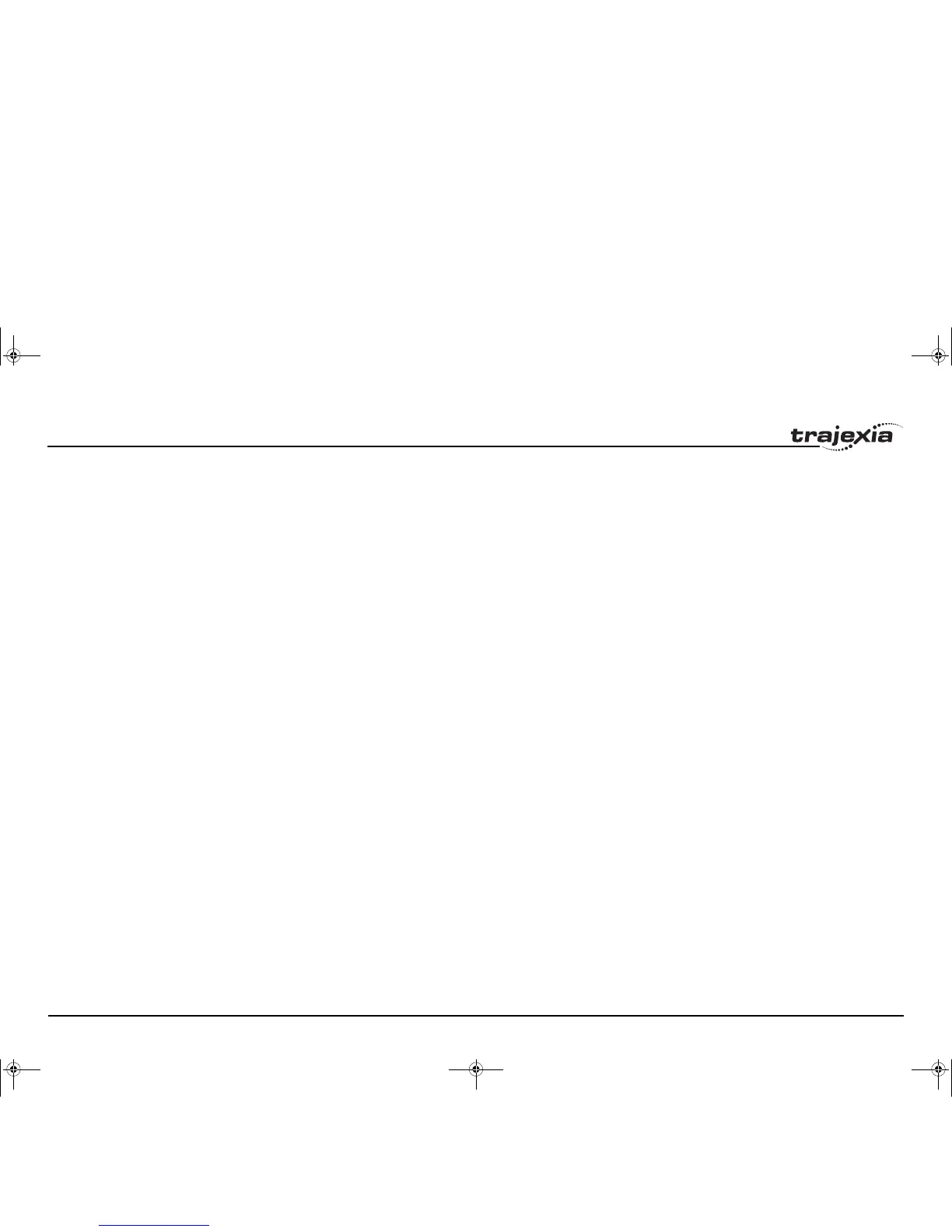BASIC commands
PROGRAMMING MANUAL 108
Revision 3.0
3.2.173 MERGE
/i
Description Note: This command has two forms, depending upon the function required:
Master and Station Functions.
All MECHATROLINK functions return TRUE (-1) if the command was suc-
cessful or FALSE (0) if the command failed.
The functions are separated out into 2 types, MASTER functions that work on
a unit, and STATION functions that work on a specific station_address of a
given unit.
All functions that retrieve a value store it in the VR variable indicated in the
last parameter. If this parameter has the value -1 then the value is printed to
the command line port.
Notes:
• If a MECHATROLINK-II command fails then the MECHATROLINK-II sta-
tion will go into warning/alarm state. All subsequent commands will then
return this warning/alarm state, even if the command is question is per-
formed correctly.
• The warning/alarm state can only be cleared by the ALM_CLR com-
mand.
• There is no ALM_CLR subcommand, so in order to send the ALM_CLR
you must enter commissioning mode.
Arguments N/A
Example No example.
See also N/A
Type Axis parameter
Syntax MERGE
Description The MERGE parameter is a software switch that can be used to enable or
disable the merging of consecutive moves. With MERGE is on and the next
move already in the next move buffer (NTYPE), the axis will not ramp down to
0 speed but will load up the following move enabling a seamless merge. The
default setting of MERGE is off.
It is up to the programmer to ensure that merging is sensible. For example,
merging a forward move with a reverse move will cause an attempted instan-
taneous change of direction.
MERGE will only function if the following are all true:
1. Only the speed profiled moves MOVE, MOVEABS, MOVECIRC,
MHELICAL, REVERSE, FORWARD and MOVEMODIFY can be merged
with each other. They cannot be merged with linked moves CONNECT,
MOVELINK and CAMBOX.
2. There is a move in the next move buffer (NTYPE).
3. The axis group does not change for multi-axis moves.
When merging multi-axis moves, only the base axis MERGE axis parameter
needs to be set.
Note: If the moves are short, a high deceleration rate must be set to avoid the
TJ1-MC__ decelerating in anticipation of the end of the buffered move.
Arguments N/A
Example MERGE = OFF ' Decelerate at the end of each move
MERGE = ON ' Moves will be merged if possible
See also AXIS.
I52E-EN-03.book Seite 108 Freitag, 29. Juni 2007 11:55 11
